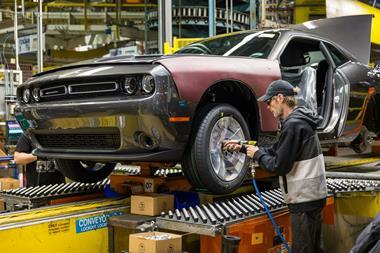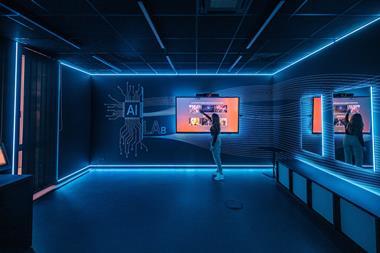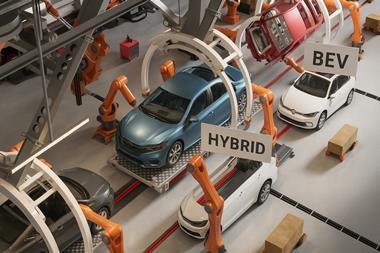Ian Henry identifies six themes from the moves, mergers and makeovers underway in the global automotive tier supply sector
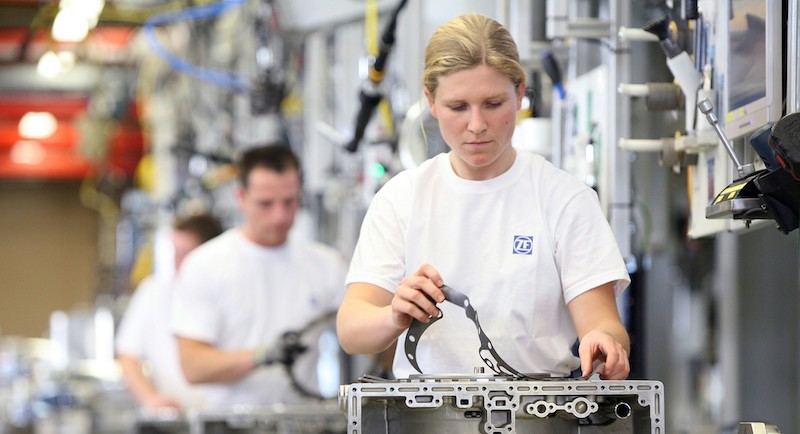 Six themes characterise the automotive supply sector at present, namely: ongoing M&A, the financial challenges faced by the supply base, restructuring and realignment of product portfolios, investment in new facilities, the development of a new supplier footprint for EVs and the multiple challenges arising from changes to the trading regime and tariffs imposed by the US in particular. In this review, we look at each one in turn, with examples from across the world to illustrate the range of issues and the ways in which the industry is responding. Although the eventual outcome in each area is uncertain, of one thing we can be sure – that further change is on the way.
Six themes characterise the automotive supply sector at present, namely: ongoing M&A, the financial challenges faced by the supply base, restructuring and realignment of product portfolios, investment in new facilities, the development of a new supplier footprint for EVs and the multiple challenges arising from changes to the trading regime and tariffs imposed by the US in particular. In this review, we look at each one in turn, with examples from across the world to illustrate the range of issues and the ways in which the industry is responding. Although the eventual outcome in each area is uncertain, of one thing we can be sure – that further change is on the way.
1: M&A continues – but at a slower pace than in recent years…
Regular mergers and acquisitions have been a defining characteristic of the automotive supply sector for many years and the process will doubtless continue. However, the number of mega-deals has certainly slowed, although one major deal is in the offing. This is Fiat Chrysler’s expected sale of Magneti Marelli. Private equity firm KKR, is the most likely buyer, intending to combine Magneti Marelli with the Japanese company Calsonic Kansei which KKR already owns. This deal could be worth up to 6bn euros including debt; disposing of Magneti Marelli is understood to have been approved by the Fiat Chrysler board before the death of Sergio Marchionne. As well as providing Fiat Chrysler with a major cash injection which will help fund its ongoing restructuring and move into electric and autonomous vehicles in the years ahead, it also has wider significance in terms of how car companies and suppliers work together.
The disposal of Calsonic Kansei helped Nissan free up capital and loosen the obligation to source from a captive supplier which was not necessarily the most competitive supplier on all contracts. The same rubric applies to Fiat Chrysler which will be better able to source from global suppliers or regional specialists, rather than worrying about keeping an in-house business busy. Calsonic and Magneti have limited areas of product overlap (and where they do scale benefits will help), so KKR would gain new product markets and enhanced presence at key VMs, not just Fiat Chrysler. Within Magneti Marelli itself the real prize is Automotive Lighting, one of the top five suppliers globally, alongside Stanley, Koito, Hella and Valeo. Within Europe specifically it has a share of close to 30%, on a par with Hella and Valeo.
But for all its strength in lighting, Magneti Marelli – and its imminent stable mate Calsonic – are far from immune to the challenges facing the industry as a whole.
Profit warnings have been a feature of many of the quoted suppliers in recent times and even among the non-quoted suppliers, profit margins are less than ideal. This acts as a further drive to merge, with Japanese electronic supplier, Pioneer, also reportedly looking to be acquired by or form joint ventures with Calsonic and KKR. Other current or recent M&A activity includes:
Renesas Electronics of Japan considering buying US supplier Integrated Device Technology as Renesas looks for enhanced capability in chip making to autonomous cars. This deal is reported to be valued at US$6bn, not that far off the reported value of the Magneti Marelli sale, illustrating particularly well the shift in the market and how new technologies are valued so highly compared to established product companies.
German seat components supplier Grammer has acquired Toledo Molding and Die for US$271m. This adds US$300m in sales for Grammer (more than doubling its US business), through 10 factories in the US and one in Mexico. TMD makes door panels, pillars, glove boxes and centre console parts, adding product width – and enhanced customer access – to Grammer’s existing seating components line-up.
And Yageo of Taiwan announced in May that it would buy Pulse Electronics for US$740m, boosting Yageo’s presence in the automotive electronics sector, especially in the self-driving segment.
2: Financial challenges
As noted above, suppliers in established automotive component suppliers generally do not generate significant margins. This is because of price pressure from the VMs themselves in commodity markets and the parallel costs which suppliers have to bear in investing in new technologies.
 Continental is seeking to split off its powertrain division as it moves to embrace changes in the automotive industry
Continental is seeking to split off its powertrain division as it moves to embrace changes in the automotive industryOne consequence of this pressure is the occasional issuing of a profit warning, the impact of which can be brutal and sudden; for example, when Continental announced a second profits warning of 2017 in August, its share price fell by 17% in two days. ZF has also reported disappointing financial results. Here earnings for the last quarter fell to 1.06bn euros down from 1.2bn euros a year earlier. The company attributed the fall to high raw material prices, currency fluctuations and increased R&D spending.
According to Automotive News Europe, the pressures which Continental face, as reflected in the sector as a while, means that quoted tier 1 suppliers across the world are trading at discounts of between 20 and 30% to five-year price-to-earnings multiples; and such discounts will be attractive to buyers like KKR. Hence their reported interest in Magneti Marelli and no doubt other suppliers too.
… and some successes too
Not all companies are so financially challenged, with those which have anticipated technical and market shifts ahead of time able to report positive results. For example, Magna reported record net income in Q1/2018, at US$660m, up 21% year-on-year, although much of this growth came from contract vehicle production, for Mercedes, BMW and JLR.
But its mirror and electronics components business has also reported a strong rise in sales and profits. It did sound a note of caution, surrounding NAFTA negotiations and the fear of tariffs (see part 6 below).
Dana also reported strong profits for Q2/2018, with net income up 75%, with a revenue rise of just 12%. To some extent this comes from one-off tax changes in the company’s favour, but growth through strategic acquisitions have also helped. For example, it purchased majority stake TM4 of Canada, helping to make Dana vertically integrated in electric vehicle systems.
3: Ongoing company restructuring
The M&A activity referred to above is a reflection of the ongoing restructuring in the sector. But industry restructuring does not just mean M&A, as much change also comes about when major companies adjust their product and technology focus. This can involve a significant change; for example, Bosch, the largest automotive tier one supplier, is moving heavily into artificial intelligence, while consolidating its traditional powertrain business and exiting from several commodity segments, e.g. generators and starter motors. Long term, with the growth of artificial intelligence (AI) business, it wants to become a connected mobility services supplier.
Meanwhile two of the traditional leaders in automotive seating are also changing their business mix. Lear is focusing increasingly on advanced electronics, having acquired Israeli GPS company EXO Technologies. This is part of Lear’s wish to develop its seats business into smart systems that can anticipated traffic conditions and also personalise the cabin area of future vehicles. Meanwhile Adient, formerly the seats business of Johnson Controls, will focus on seating, but not just in automotive. It has a launched a joint venture with Boeing to develop aircraft seating, Adient Aerospace, to be based in Kaiserslautern in Germany. Toyota Boshoku, also a seat supplier, especially to Toyota, is widening its range of plastic technologies to supply more interior and exterior parts. Toyota’s main components supplier, Denso, is also actively restructuring. All electronics components business within Toyota will be transferred to Denso which will be responsible for all Toyota electronics supply from 2022.
Two more restructuring examples worth noting come from Aptiv and Continental; Aptiv (ranked around no. 28 in the global supplier list) is the recently renamed former Delphi Automotive (once the sector’s largest company). This refocused business has recently spent US$400m to buy nuTonomy, a supplier of software systems for autonomous vehicles; its technologies are now on test in a fleet of Lyft cars in Las Vegas. Meanwhile Continental, whose challenging financial situation was noted above, is working on plans to separate its powertrain business via an IPO.
4: Investments in new factories continues, but also at a slower pace than in recent years
Suppliers investing in new facilities as they win new supply contracts, often following their VM customers to new locations, is another defining feature of the sector. Now other issues are coming into play. For example, the decision by the UK leave the EU was initially thought as likely to lead to more suppliers locating in the UK to boost local UK content of vehicles made in the country. Specifically, Nissan had been thought likely to bring several new suppliers to the UK for next Qashqai and X-Trail but to date this has not happened. Indeed, there has been little or no sign of such an investment boost and in practice this is unlikely until the final Brexit deal is clear, assuming that the deal continues to see the UK as an economic and practical place in which to produce vehicles, especially for sale into the EU.
In the US, partly in response to the threat of an ever-wider application of tariffs by the US under President Trump, not only are car companies moving some vehicle production back to the US, but suppliers are also expanding within the US to boost domestic content and avoid exposing future business to tariffs. For example, Denso is investing US$1bn in Tennessee to allow electronics and connected vehicle technology to be made in the US, rather than being imported from Japan. The expanded Denso plant at Maryville will inverters for EVs, radar systems and data control modules. Officially this has been ascribed to Denso’s localisation strategy, but there is no doubt that Denso could well have lost contracts domestic suppliers because of the fear of local content rule changes and tariffs, so expanding in the US was inevitable.
On a smaller scale, a German supplier, Elring Klinger, is investing US$23m in Fort Wayne in Indiana. Here it will make aluminium shields for acoustic and thermal protection. Another new US investment example come from Novelis, the leading aluminium sheet supplier, which is expanding as the use of aluminium spreads in North America. It is constructing a US$300m facility in Kentucky, focusing on heat treatment and pre-treatment of aluminium for use in body-in-white parts, as well as hoods, doors and liftgates. Production will begin in 2020, processing 200,000 tonnes of aluminium a year.
Suppliers can also reduce costs and cope better with both the risk of tariffs and changing vehicle company requirements by locating as closely as possible to the plant where the parts concerned will be used. Lear, for example has opened a new just-in-time seat plant at Flint, Michigan to supply the GM plant there with seats for the Chevrolet Silverado and GMC Sierra pick-ups. This is actually the first all-new automotive components factory to open in Flint, a long-established automotive town, for over 30 years.
Not all new North American investment is taking place within the US. Despite the uncertainty surrounding the ultimate fate for the NAFTA deal, suppliers are continuing to invest in Mexico. For example, Cooper Standard has started constructing a new rubber mixing plant in Aguascalientes which will employ 100 people when operating at full production rates.
In the UK, one of the few all-new tier 1 investments to proceed since the Brexit vote opened in May 2018. This is a Magna plant making structural aluminium castings for JLR, employing 300 people. Another aluminium parts supplier, Constellium, is extending its plant at in Decin, Czech Republic to meet increased demand for aluminium extrusions, notably for Mercedes,for whom it has won a major contract on the new CLS.
Continental is also opening several new plants, despite its challenging financial situation noted earlier. For example, it has opened an extension to its factory in Trutnov, Czech Republic. Nine new assembly lines have been installed to makes nitrogen oxide (NOx) sensors, creating 200 new jobs. Interestingly this expansion has taken place in the light of falling diesel sales, and the reduction in diesel offerings from certain car companies. NOx sensor demand will remain however as long as diesels are in use. Further north, in Lithuania (not a well-established automotive supply point), Continental is building its first automotive plant in the country, in Kaunas. This will make seats control units and radar parts for European customers.
The unrelated Continental Structural Plastics (CSP) is expanding in France, adding sheet moulding line at its plant in Pouance. The investment will amount to 5.1m euros and will allow the company (which was acquired by the Teijin group of Japan in 2017) to better supply its European customers reducing reliance on its US operations.
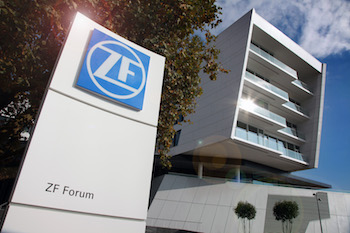 ZF is investing in hybrid powertrain parts, motors, levers and switches, in Pancevo near Belgrade in Serbia
ZF is investing in hybrid powertrain parts, motors, levers and switches, in Pancevo near Belgrade in Serbia5: The emergence of a new supplier footprint in EV components
Across the world, a new supplier footprint is being established in EV components, especially batteries and motors. Recent developments in Europe especially have seen VW and Mercedes establishing their own electric motors business, but external suppliers are growing in Europe in response to the shift in powertrains. For example:
BMW will source 4bn euros of battery cells from CATL of China over the next few years. Some will come China, but CATL is also building a new plant in Erfurt in Germany to supply around 45% of BMW’s battery demand. CATL is BMW’s second battery supplier (Panasonic is the first) and a third is expected to be added in due course to avoid over dependence on just two companies.
PSA is developing its electric motors capability through a joint venture with Nidec of Japan and French company Leroy-Somer. The motors, to be used in a variety of future hybrid and full electric vehicles, will be developed in the JV engineering operations near Paris, with produced at the PSA Tremery plant f. 220m euros will be invested here as part of the major electrification drive across the PSA group as a whole.
ZF is investing in hybrid powertrain parts, motors, levers and switches, in Pancevo near Belgrade in Serbia. Investment will be around 100m euros, with a 1,000 strong workforce carrying out labour intensive assembly work – hence the decision to locate in one of Europe’s lowest labour cost locations rather than ZF’s home market of Germany.
And further afield, GKN, recently acquired by the Melrose conglomerate, is expanding its driveline business, but outside its traditional European market. It has recently opened a JV plant in China to make its multimode eTransmission, for a Chinese vehicle company. This facility will make 1m units a year by 2025.
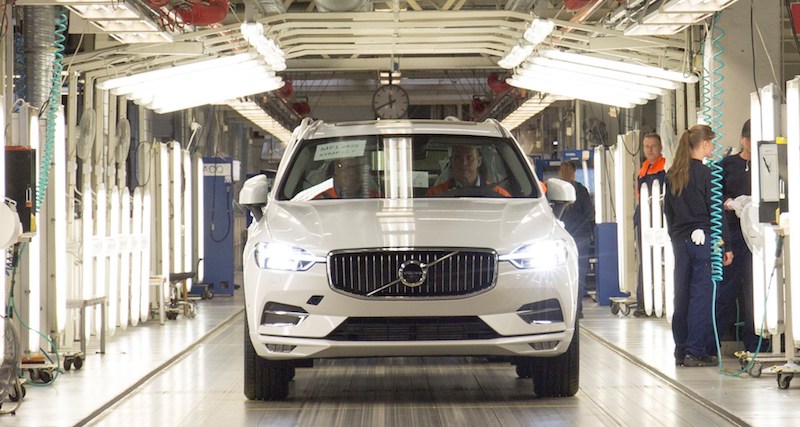 The first new XC60 rolls off the production line in Torslanda, Sweden
The first new XC60 rolls off the production line in Torslanda, Sweden6: Changing trading environment – tariffs, NAFTA and more …
The wish by President Trump to renegotiate the terms of NAFTA (North American Free Trade Agreement) which has governed trade between the US, Canada and Mexico for some years has caused much worry for the automotive sector. This threat, and risk, comes on the back of tariffs already having been imposed on each other by the US and China. For the car companies this has already led to some changes in vehicle assembly locations – for example Volvo has moved the assembly of the XC60 SUV for the US market from China to Sweden to avoid tariffs on Chinese imports (although it will still have to pay the tariff on the S90 imported in small volumes from China).
But for suppliers, many of whom do not have either alternative production locations, nor the financial strength to absorb tariffs, this is a time of serious worry and financial risk for many companies, large and small alike.
For example, Lucerne International, a Michigan supplier of door hinges, fears for its future. It sources the basic hinges from its low-cost locations in Asia before being imported, checked and repackaged in Detroit and then shipped to Toledo, for example. for fitting on the Jeep Wrangler. These parts will be subject to a 25% applied to all automotive metal components, including hinges. For Lucerne this means that 90% of its US$40m+ revenue covers components which will be subject to the tariff. The company says it cannot afford to absorb the cost, yet it cannot easily or quickly move production back to the US, due to a lack of capacity, and this despite plans already in place to open a new plant in Michigan.
Looking at the impact of tariffs on larger suppliers, we can take Brose, a German supplier of seats components. Brose expects tariffs to add at least US$5m to its cost base.
The company has 11 plants already in the US but relies on sub-components imports, with its two electronic component factories expected to fair worst under the new tariff regime.
Admittedly the tariff cost is relatively small compared to other numbers which Brose reports for the US. It expects to invest US$800m in North America in the next few years but fears it will have to change the nature and focus of this investment if tariffs remain. Meanwhile Japanese supplier Aisin expects US tariffs will have mean a hit of US$360m per year to its bottom line.
Suppliers have limited options in the short term. Some will look for loopholes in their contracts which might allow them to pass the tariff cost on to the car company automatically, but many car companies will not accept this.
Others will look for opt-outs from the new tariff regime, but this can take several years, and tariffs would have to be paid in the interim anyway. If tariffs, especially on imports from China remain, in the long term then suppliers will have to look for alternative production locations, possibly in Mexico if they cannot be made economically inside the US.
And therein lies the risk for the US itself – if tariffs make component production outside the US itself economic, and the costs of production within the US are equally costly, if the product concerned is essential for the car concerned, then a price rise for the end consumer is unavoidable.
Tariffs may well mean some relocation of production back to the US, but almost certainly at the risk of higher prices paid by US consumers.

































